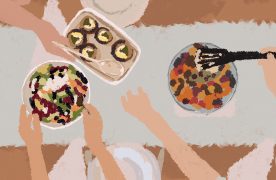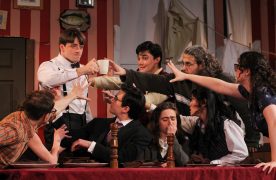Disney lacks diversity amongst their princesses — that fact isn’t new. There are twelve official princesses: along with “Frozen’s” Elsa and Anna of the Frozen franchise are also included, but, they haven’t officially been coronated as Disney princesses.
Out of 14, only four of them are non-white. Disney lacks the urgency to represent all ethnicities. As a multinational company, there should be a representation of all different life forms.
Little girls tend to idolize princesses. Growing up, I would look up to these princesses as the ideal definition of beauty. A lot of us wanted to be princesses when we grew up, but how can we aspire to that if we don’t look like any of them?
My favorite princess was Ariel from “The Little Mermaid.” I dreamed of becoming Ariel and had an entire collection of Ariel-related toys and dresses. The problem is with her appearance: Ariel is a redhead with blue eyes, but I have blonde, frizzy hair and brown eyes.
Growing up, I thought I couldn’t be a princess because I didn’t look like any of them. What is surprising is that I am still of light skin complexion and blonde, so my representation was not entirely absent. That definitely doesn’t apply to people with darker skin tones.
Making most princesses white can lead to the idealization of white people. Since we see princesses as the standard when we’re young, white features are equated to beauty. This is an example of how the media contributes to our internalized racism.
As a Latina woman, I would like to see a princess I can relate to. In 2016, Disney finally released a Latina princess Elena Castillo Flores, more commonly known as Elena of Avalor. She has tan skin, brown eyes and dark hair. She finally gives some representation to the Latina community. However, Elena was not featured as the star of the film.
Most people are not even aware that there is a Latina princess. She is only featured in a kid’s show. This shows how Disney doesn’t approach minority princesses with the same attention as its white princesses. 2016 is too recent to have just created a Latina princess.
There is also a lack of diversity with body sizes. All princesses are skinny with voluptuous features and a small waist. This instills the belief in young girls that being skinny equals being beautiful. They also have unrealistic bodies, with six of the princesses having eyes larger than their waists.
Disney movies also center the plot around its princesses’ physical appearance with 94 percent of them mentioning it. Furthermore, this discussion occurs 13.6 times on average throughout films, according to a blog at Middlebury College.
Without a diverse representation of body types, it can encourage eating disorders in those who wish to reach the unrealistic body of these princesses. This is better known as the Disney Phenomenon, which means that the bodies of Disney princesses have led to body dissatisfaction and eating disorders, according to Response Journal.
I am rather disappointed with Disney. I am even more disappointed that I did not connect the dots sooner that there is a severe lack of representation. It was not until last week when I was in Disney World and I looked at all the princesses in real life.
Given that minorities like myself are now speaking up, I hope Disney makes the efforts to be more inclusive. I am disappointed that, even though Frozen was wonderfully produced, it featured yet another white thin princess.
Disney needs to have representation so that all the children in the world can aspire to be a Disney princess they can relate to.











